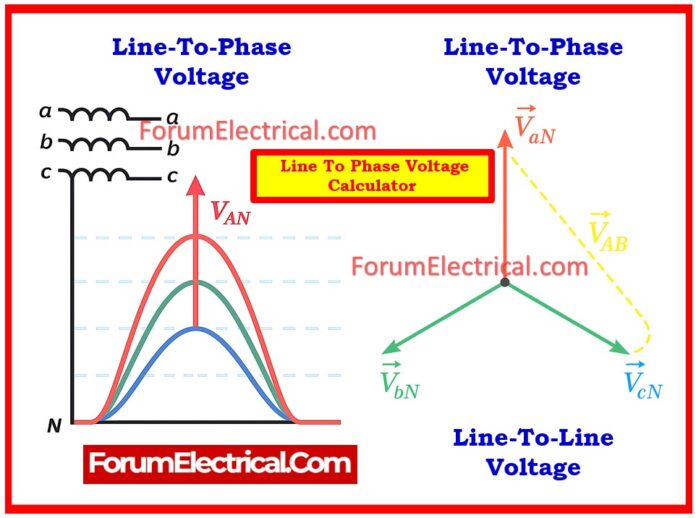Calculator
Click here for more Electrical Calculators
A Line-to-Phase Voltage Calculator calculates the voltage between a line conductor & the neutral point (also known as phase voltage) in a 3-phase electrical system. It works especially well when the line voltage (line-to-line voltage) is known and the connection type is star (Y).
This tool is commonly used in:
- Substation design.
- Electrical transformer analysis.
- Load calculations for three-phase systems.
Converting line & phase voltages is an essential activity in the field of electrical engineering.
For engineers and technicians, the Line to Phase Voltage Calculator gives a practical solution that simplifies these conversions.
In addition to providing accurate calculation, this post also describes the formula, how to use it, and also solved example.
How to use Line to Phase Voltage Calculator?
Just enter the line voltage in the appropriate field to utilize the Line to Phase Voltage Calculator.
The correct phase voltage will be displayed once you enter the line voltage.
For this frequent electrical conversion, this online calculator provides an easy and effective solution.
Formula
For Star (Y) Connection
VPhase = VLine/√3 = VLine/1.732
Where
VPhase – Line-to-Phase Voltage (or) Phase Voltage
VLine – Line-to-Line Voltage
For Delta (Δ) Connection
VPhase = VLine
Solved Example
If a 3-Phase Star (Y) connected system has the line voltage of 415 V, what is the phase voltage of the connected system?
Given
VLine = 415 V
Formula
VPhase = VLine/√3 = VLine/1.732
Solution
VPhase = 415/√3 = 415/1.732
VPhase = 239.61 V
Round Value: VPhase ≈ 240 V
Answer
VPhase = 240 V
What is the Phase Voltage of Line to Line?
The line-to-line voltage in the 3-phase network is √3 times of the phase voltage.
Line-to-line & phase-to-phase voltages are primarily often the same.
Line (or) phase voltages higher than 440 V can be measured with the potential transformer.
Can I use this calculator on both AC & DC systems?
No, because the formula works with three-phase AC power, the calculator is made especially for AC systems.
How do you measure Phase Voltage?
Use a multimeter that is set to AC voltage to measure three-phase voltage.
Attach the black probe to the different phase wire & the red probe to one of the L1, L2, or L3 phase wires for every phase.
Measure L1-L2, L2-L3, & L3-L1 between each pair.
All of these multimeter readings need to be comparable.









